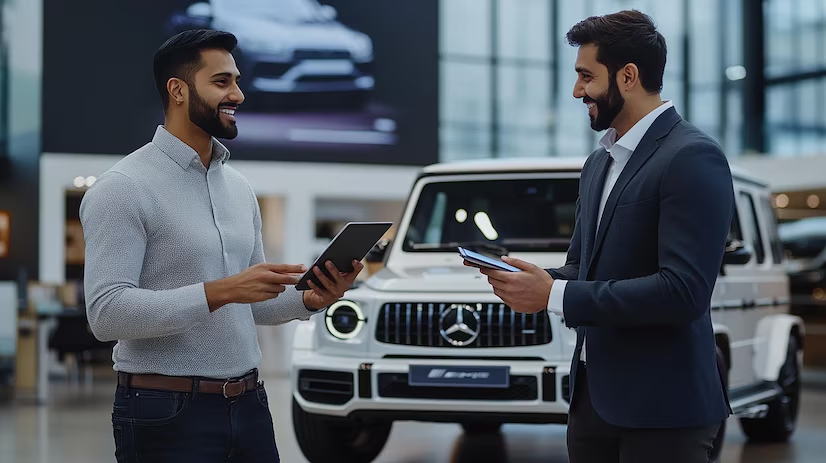How Does Buy Here Pay Here Car Lots Work
Getting a car is such a great feeling, but dealing with the dealership isn’t that easy. With different models to choose from, varieties of financing options, and negotiating strategies, there are many things to be aware of when buying a car from a dealer. Whether it is your first time buying a car or upgrading from your existing one, knowing the buying procedure can assist you in getting good deals.
This blog aims to explain the car-buying process in detail, emphasising all the steps, from checking the options to completing the paperwork. At the end of the procedure, we will answer a few questions that people ask before buying a car.
Plan your Investment
You can only go to a dealership after first setting up a unit. Everyone has to figure out beforehand how much they can spend on a car. This way, you can avoid overpaying and effectively limiting the number of choices available. Consider the following aspects:
The Down Payment
A deposit can be made when signing the loan agreement. The larger the down payment, the lower the total interest and monthly instalments.
Monthly Payments
Consider a reasonable monthly payment. If you own a car, using it involves expenses for petrol, car insurance, repair work, etc.
Loan Pre-Approval
Ask your bank or credit union whether they can pre-approve you for an auto loan. This will allow you to know what amount you can negotiate for and what the applicable interest rate should be as well.

Having a set budget and a pre-approved loan can make your experience at the dealership more convenient and less stressful.
Go to Dealerships and Test the Cars you have Selected
After you have filtered your options down to a few models, it is time to go to several dealerships and specifically test-drive those models. Here’s how to make the most of your visit:
Before going, call the dealership to check if they have the models you wish to see and test drive.
Observe the Car
Take the time to examine both the exterior and interior parts. Note the ergonomics of the windows, driving instruments, and climate and infotainment controls.
Test Drive
Pet your foot against the pedal on the humming lanes of a highway and on the web of many city streets, and you will have an idea of the car’s acceleration and braking. Noise, frame, and overall ‘feel’ are also worth paying attention to.
It is undoubtedly necessary to take a test drive, as it helps you determine whether the car is what you imagined.
Price Determination
The idea of haggling over a car’s price might feel unnerving, but this consideration is part of the process. Dealerships will rarely price vehicles at the least they are willing to sell.
Look for the Estimated Market Price
Use Kelley Blue Book or Edmunds to check what the car is sold for on average. That way, you will have an idea of how much you should be ready to pay.
Start Low, Go Up Gradually
Start with a bid lower than your target price and work up. Dealerships will usually always return to you at a higher rate but may still find room to inch closer to what you propose.
Consider Additional Costs
You should also consider other payments, such as taxes, registration, and dealership fees. Always ask for those fees to be broken down so you can know how much you will pay for each.
Look for Other Financing and payment options
They or some other party likely arranged this financing. Many dealerships have their props at this stage. Remember to compare their offering with your pre-approved loan.
Consider Interest Rate Comparisons
If your lender has offered you a rate less than the dealership has provided, stick to your rate.
Select a Payment Plan
When choosing a payment plan, avoid those that will stretch your budget too far. Prolonging the terms can reduce monthly payments, but this would impact the total interest paid.
Sign the Documents and Take the Keys
After successfully agreeing on a selling price and agreeing on financing, all that is left now is to seal the agreement. Here is what to anticipate:
Sales Contract
Confirm the conditions reflected in the signed agreement. Confirm that there are no additional or hidden fees.
Warranty Information
Ask the dealer about your warranty options. A few vehicles are covered by a manufacturer warranty, and some can purchase an extended warranty.
Additional Products
Products such as gap insurance or extended service plans can be sold at dealerships. Only consider them if they are relevant to your budget and requirements.

Is Buying a Car From the Dealer the Right Option?
Buying a car from a dealership is a perfect solution for those who want to save time and have a reliable and large number of different vehicles to choose from. You can subscribe to the dealership and have various new or used cars while exploring features and having several financing options.
Promotional offers and a lease provide peace of mind for you looking for a new car, as they lower maintenance costs.
Used cars are also available at CPO programs, which can only be purchased from dealerships. These cars have been checked and come with a warranty.
These assurances make dealers more preferred by people who do not want to take the risk that comes with private sales. If you are interested in buying, you can usually trade in your older vehicle, so the cost does not always have to be too much.
The first disadvantage to consider is that dealerships have higher prices than ordinary private sellers because of their running costs and that prices are sometimes difficult to negotiate.
On the contrary, if you are interested in quality guarantees, certain legal protections, and the ease of the buying process, then a dealership is likely the best option for you.
At the end of the day, it is down to your preference and financial power; however, dealerships provide an excellent level of certainty and ease of purchase that is often hard to beat.
Frequently Asked Questions
Should I get my loan through a bank or a dealership?
It all depends. A better rate could be offered through a bank, although dealership financing can be hassle-free and comes with promotional rates. Both options should be considered.
Do you accept trade-ins at the dealership?
Most definitely, reputable car dealerships offer trade-ins and
they will evaluate the value of your car and deduct it from the price of the new vehicle, erasing a part of your expenditure in the process.
Conclusion
Purchasing a car from a dealership is a great feeling. However, tips and strategies on how to do it correctly have to be in place before heading out to the dealership. Every step is essential in the car buying process, from budgeting, car models, and test drives to negotiations and financing options. If the steps above are followed, it should be smooth sailing for the dealership and a car that resonates with the cost and expectations will be driven off immediately.
When buying a new car for the first time or just wanting to change your vehicle, there is always a procedure to follow because you wouldn’t want to end up with a car you did not feel was right.
Enjoy your car shopping!
